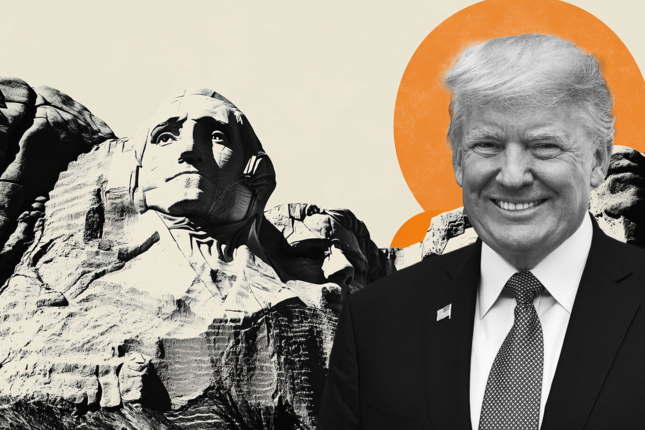- The Australian Dollar extends decline on the firmer US Dollar in Monday’s early European session.
- The hawkish tone of the Fed and challenges in China’s economic recovery weigh on AUD/USD.
- The RBA interest rate decision on Tuesday will be in the spotlight, with no change in rate expected.
The Australian Dollar (AUD) extends downside for the third consecutive day on Monday on the back of the stronger US Dollar (USD) broadly. The Greenback remains well-supported by the expectation that US interest rates will stay higher for longer, with the median projection from Federal Reserve (Fed) officials calling for one interest rate cut this year.
Furthermore, the latest mixed Chinese economic data and some challenges in China's economic operations might exert some selling pressure on the Aussie as China accounts for one-third of Australian exports. Investors will closely watch the Reserve Bank of Australia (RBA) interest rate decision on Tuesday, along with the Governor Michele Bullock press conference. The hawkish hold from the RBA could boost the AUD and cap the downside for AUD/USD in the near term. On the US docket, the Retail Sales for May will be released, which is expected to improve to 0.3% from 0% in April.
Daily Digest Market Movers: Australian Dollar attracts some sellers ahead of RBA policy meeting
- The Reserve Bank of Australia (RBA) will likely keep the cash rate at 4.35% for a fifth straight meeting as it tries to restrain consumer prices that have been underpinned by an ultra-tight employment market, economists surveyed by Bloomberg forecast.
- China’s Retail Sales improved 3.7% YoY in May from 2.3% in April, which is better than the estimate of 3.0%. Meanwhile, the nation’s Industrial Production rose 5.6% YoY in the same period, compared to the previous reading of 6.7%, below the consensus of 6.0%, the National Bureau of Statistics (NBS) showed Monday.
- The preliminary University of Michigan's Consumer Sentiment Index declined to 65.6 in June from 69.1, below the market consensus of 72.
- The UoM one-year Consumer Inflation Expectation held steady at 3.3%, while the five-year inflation outlook rose to 3.1% from 3%.
- Minneapolis Fed President Neel Kashkari said on Sunday that it is a “reasonable prediction” that the central bank will wait until December to cut interest rates. Kashkari added that the Fed is in a very good position to get more data before making any decisions.
- Cleveland Fed President Loretta Mester noted on Friday that she would like to see good-looking inflation data, adding that the path towards the Fed's 2.0% inflation goal may take longer than expected.
Technical Analysis: AUD/USD’s positive outlook remains fragile in the longer term
The Australian Dollar trades weaker on the day. The bullish outlook of the AUD/USD pair seems vulnerable as it hovers around the key 100-day Exponential Moving Average (EMA) on the daily chart. The pair could resume its downside journey if it crosses below the key EMA, as mentioned. Additionally, the 14-day Relative Strength Index (RSI) holds below the 50-midline, indicating that further downside cannot be ruled out for the time being.
The key support level for AUD/USD will emerge at the 0.6580-0.6585 region, portraying the confluence of the 100-day EMA and the lower limit of Bollinger Band. A decisive break below this level could see a drop to 0.6510, a low of March 22. The additional downside filter to watch is 0.6465, a low of May 1, and finally, the psychological level and a low of April 17 at 0.6400.
On the upside, the immediate resistance level is seen at 0.6688, the upper boundary of the Bollinger Band. Further north, the next upside target is located at 0.6715, a high of May 16. The next hurdle to watch is 0.6760, a high of January 4.
Australian Dollar price today
The table below shows the percentage change of Australian Dollar (AUD) against listed major currencies today. Australian Dollar was the weakest against the Japanese Yen.
| USD | EUR | GBP | CAD | AUD | JPY | NZD | CHF | |
| USD | 0.03% | 0.09% | 0.04% | 0.23% | -0.09% | 0.37% | 0.01% | |
| EUR | -0.03% | 0.05% | -0.01% | 0.18% | -0.11% | 0.33% | -0.05% | |
| GBP | -0.09% | -0.04% | -0.06% | 0.14% | -0.16% | 0.26% | -0.08% | |
| CAD | -0.04% | -0.01% | 0.04% | 0.20% | -0.10% | 0.33% | -0.03% | |
| AUD | -0.20% | -0.20% | -0.14% | -0.18% | -0.32% | 0.14% | -0.24% | |
| JPY | 0.07% | 0.08% | 0.18% | 0.14% | 0.29% | 0.48% | 0.07% | |
| NZD | -0.38% | -0.34% | -0.28% | -0.34% | -0.15% | -0.49% | -0.37% | |
| CHF | -0.01% | 0.03% | 0.08% | 0.03% | 0.22% | -0.10% | 0.36% |
The heat map shows percentage changes of major currencies against each other. The base currency is picked from the left column, while the quote currency is picked from the top row. For example, if you pick the Euro from the left column and move along the horizontal line to the Japanese Yen, the percentage change displayed in the box will represent EUR (base)/JPY (quote).
Australian Dollar FAQs
One of the most significant factors for the Australian Dollar (AUD) is the level of interest rates set by the Reserve Bank of Australia (RBA). Because Australia is a resource-rich country another key driver is the price of its biggest export, Iron Ore. The health of the Chinese economy, its largest trading partner, is a factor, as well as inflation in Australia, its growth rate and Trade Balance. Market sentiment – whether investors are taking on more risky assets (risk-on) or seeking safe-havens (risk-off) – is also a factor, with risk-on positive for AUD.
The Reserve Bank of Australia (RBA) influences the Australian Dollar (AUD) by setting the level of interest rates that Australian banks can lend to each other. This influences the level of interest rates in the economy as a whole. The main goal of the RBA is to maintain a stable inflation rate of 2-3% by adjusting interest rates up or down. Relatively high interest rates compared to other major central banks support the AUD, and the opposite for relatively low. The RBA can also use quantitative easing and tightening to influence credit conditions, with the former AUD-negative and the latter AUD-positive.
China is Australia’s largest trading partner so the health of the Chinese economy is a major influence on the value of the Australian Dollar (AUD). When the Chinese economy is doing well it purchases more raw materials, goods and services from Australia, lifting demand for the AUD, and pushing up its value. The opposite is the case when the Chinese economy is not growing as fast as expected. Positive or negative surprises in Chinese growth data, therefore, often have a direct impact on the Australian Dollar and its pairs.
Iron Ore is Australia’s largest export, accounting for $118 billion a year according to data from 2021, with China as its primary destination. The price of Iron Ore, therefore, can be a driver of the Australian Dollar. Generally, if the price of Iron Ore rises, AUD also goes up, as aggregate demand for the currency increases. The opposite is the case if the price of Iron Ore falls. Higher Iron Ore prices also tend to result in a greater likelihood of a positive Trade Balance for Australia, which is also positive of the AUD.
The Trade Balance, which is the difference between what a country earns from its exports versus what it pays for its imports, is another factor that can influence the value of the Australian Dollar. If Australia produces highly sought after exports, then its currency will gain in value purely from the surplus demand created from foreign buyers seeking to purchase its exports versus what it spends to purchase imports. Therefore, a positive net Trade Balance strengthens the AUD, with the opposite effect if the Trade Balance is negative.
Information on these pages contains forward-looking statements that involve risks and uncertainties. Markets and instruments profiled on this page are for informational purposes only and should not in any way come across as a recommendation to buy or sell in these assets. You should do your own thorough research before making any investment decisions. FXStreet does not in any way guarantee that this information is free from mistakes, errors, or material misstatements. It also does not guarantee that this information is of a timely nature. Investing in Open Markets involves a great deal of risk, including the loss of all or a portion of your investment, as well as emotional distress. All risks, losses and costs associated with investing, including total loss of principal, are your responsibility. The views and opinions expressed in this article are those of the authors and do not necessarily reflect the official policy or position of FXStreet nor its advertisers. The author will not be held responsible for information that is found at the end of links posted on this page.
If not otherwise explicitly mentioned in the body of the article, at the time of writing, the author has no position in any stock mentioned in this article and no business relationship with any company mentioned. The author has not received compensation for writing this article, other than from FXStreet.
FXStreet and the author do not provide personalized recommendations. The author makes no representations as to the accuracy, completeness, or suitability of this information. FXStreet and the author will not be liable for any errors, omissions or any losses, injuries or damages arising from this information and its display or use. Errors and omissions excepted.
The author and FXStreet are not registered investment advisors and nothing in this article is intended to be investment advice.
Recommended content
Editors’ Picks

Gold trades near record-high, stays within a touching distance of $3,100
Gold clings to daily gains and trades near the record-high it set above $3,080 earlier in the day. Although the data from the US showed that core PCE inflation rose at a stronger pace than expected in February, it failed to boost the USD.

EUR/USD turns positive above 1.0800
The loss of momentum in the US Dollar allows some recovery in the risk-associated universe on Friday, encouraging EUR/USD to regain the 1.0800 barrier and beyond, or daily tops.

GBP/USD picks up pace and retests 1.2960
GBP/USD now capitalises on the Greenback's knee-jerk and advances to the area of daily peaks in the 1.2960-1.2970 band, helped at the same time by auspicious results from UK Retail Sales.

Donald Trump’s tariff policies set to increase market uncertainty and risk-off sentiment
US President Donald Trump’s tariff policies are expected to escalate market uncertainty and risk-off sentiment, with the Kobeissi Letter’s post on X this week cautioning that while markets may view the April 2 tariffs as the "end of uncertainty," it anticipates increased volatility.

US: Trump's 'Liberation day' – What to expect?
Trump has so far enacted tariff changes that have lifted the trade-weighted average tariff rate on all US imports by around 5.5-6.0%-points. While re-rerouting of trade will decrease the effectiveness of tariffs over time, the current level is already close to the highest since the second world war.

The Best brokers to trade EUR/USD
SPONSORED Discover the top brokers for trading EUR/USD in 2025. Our list features brokers with competitive spreads, fast execution, and powerful platforms. Whether you're a beginner or an expert, find the right partner to navigate the dynamic Forex market.
